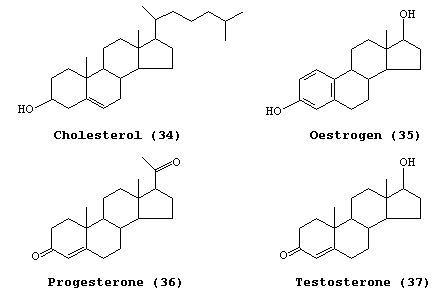In contrast to carbohydrates which provide the body with the short term energy needed, lipids are often used as a long term energy source. All lipids are hydrophobic, and are composed of oxygen, carbon and hydrogen atoms. They contain fewer oxygen atoms relative to carbohydrates. There are four main types of lipids: fats, phospholipids, steroids and waxes. In this blog, I will focus primarily on the first three.
Fats Glycerol is a type of fat containing a three carbon glycerol linked to three fatty acid chains. This linkage is done through the formation of ester bonds. These fatty acid chains can be either saturated or unsaturated based on the types of bonds present within the carbon chains: saturated fatty acids contain only single bonds within their carbon chains whereas unsaturated fatty acids contain double or even triple bonds within the structure of their chains. We find these types of fat in many of our foods. Unsaturated fats (such as those found in oils) are considered healthier as they are less likely to form clots in our blood vessels.
PhospholipidsPhospholipids are a key component of our cell membranes. Composed of a polar choline and phosphate group attached to a non polar group of glycerol and two fatty acid chains, phospholipids are ideal for this purpose. When dissolved in water, they form two layers in which the polar heads are exposed to the water, and the non polar tales mix in the middle. They can also take on a spherical formation. These spheres are called micelles. This is what creates the cell membrane. The polar heads allow the cell exist in water while the highly non polar layer prevents polar substances (such as water or ions from penetrating. There are, however hydrophilic pores which allow for these polar substances to pass through as required.
SteroidsSteroids are a type of lipid which play significant roles in the human body. They are composed of four fused hydrocarbon rings and several functional groups. In the cell membrane, cholesterol is an important steroid which keeps the membrane intact. In the body, it is also converted to vitamin D, bile salts and hormones.



No comments:
Post a Comment